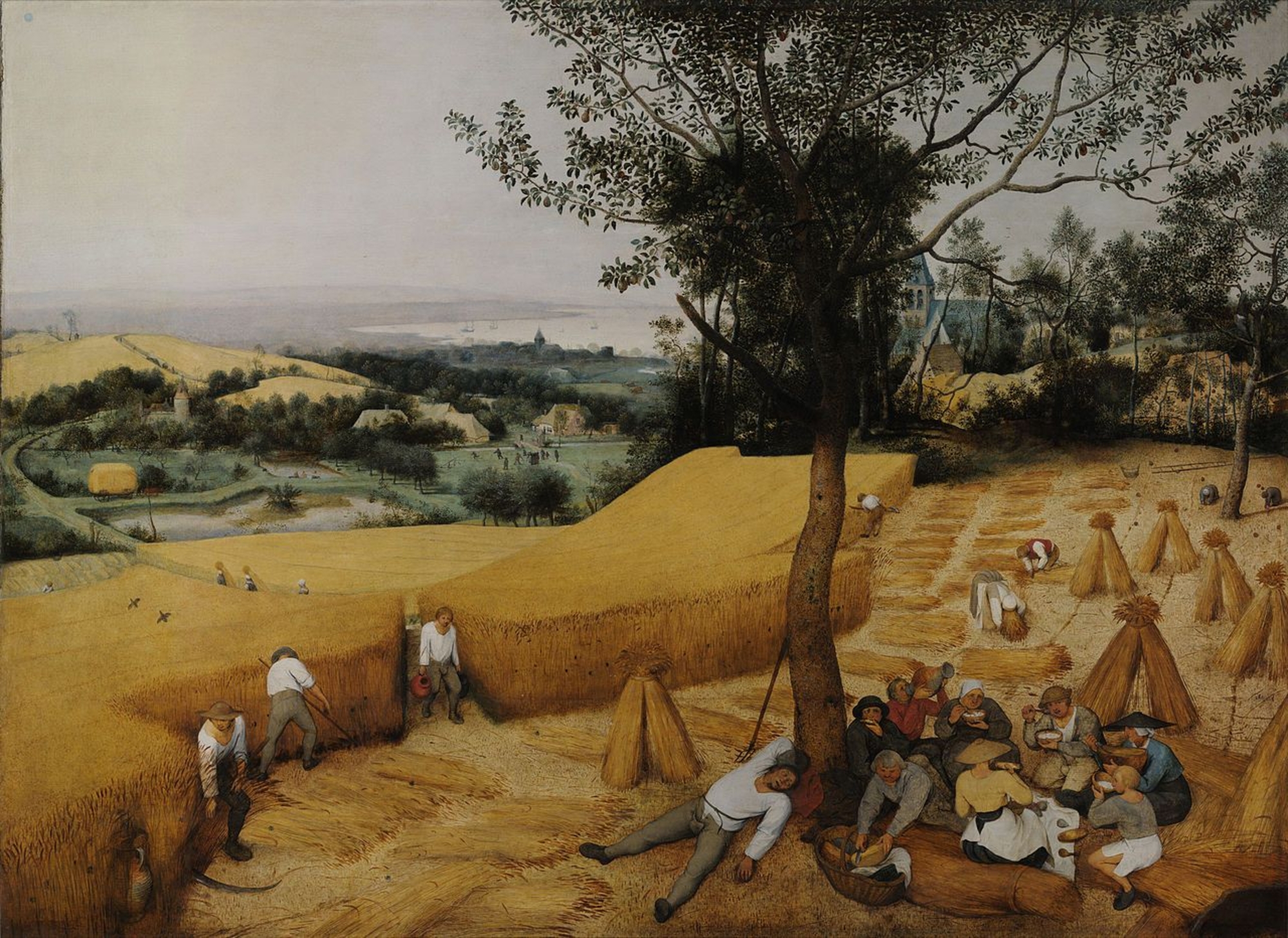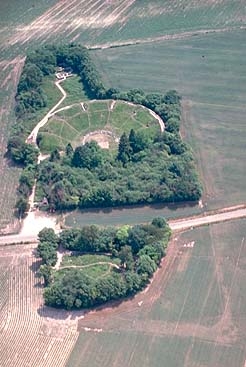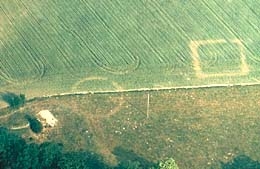- Home
- Discoveries
- Gallic and Gallo-Roman sanctuaries
- Historic of the research
This monumental Gallo-Roman sanctuary at Champlieu has been well known since the excavations under Napoleon III. The yellowed grain shows that it extends well beyond the "listed" sector. Orrouy (Oise).
Despite the abundance and richness of Gallic necropoli (particularly in the department of Aisne), prior to aerial archaeology, no pre-Roman sanctuary had been studied, even though a number of pits and trenches had been observed in the vicinity of large graves. On the other hand, we know of a number of Roman-era temples, whose stone foundations had been described a long time ago. Some of them were even the subject of large-scale excavations, like at Champlieu, a town near Orrouy (Oise), at "Mont Berny" near Pierrefonds (Oise) and at "Bois l'Abbé", near the town of Eu (Seine-Maritime).
It is only in the past fifty years that aerial archaeology has revealed a large number of Gallo-Roman sanctuaries. From excavations we have seen that religious areas that predated the conquest often preceded them.
Proximity of a square funerary enclosure and a round one at Rouvroy-lès-Merles (Oise).
Although "classic" Greco-Roman temples have rectangular layouts, almost all Gallo-Roman temples, which have stone foundations but are from an native tradition, have a square, or nearly square, floor plan. This is unquestionably a Celtic tradition. In addition, large Gallic tombs are, in the same manner, surrounded by a square ditch, while circular moated moated systems, for both ritual and funerary purposes, lasted into the Roman era, and even into the High Middle Ages.


